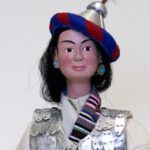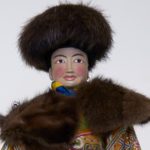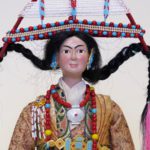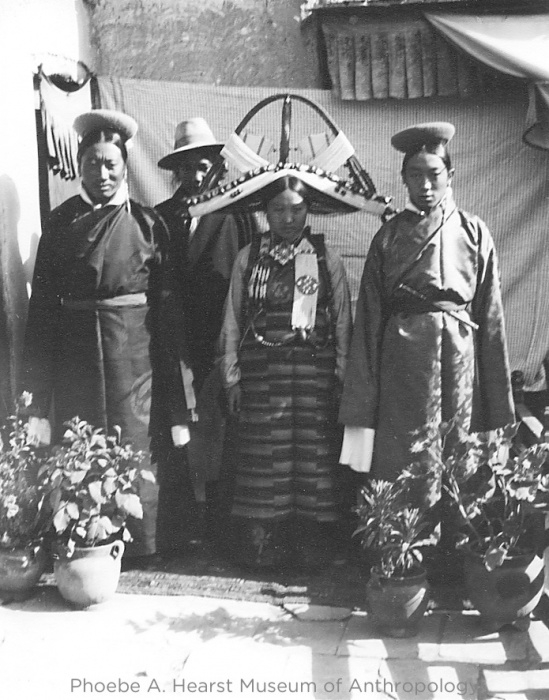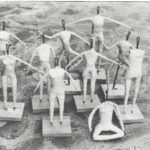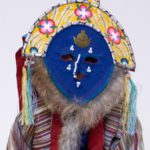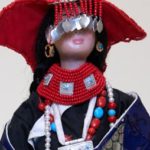Government Officials & Aristocrats
Prior to 1959 the rank and birthplace of a Tibetan government official could be identified by the color, texture, and pattern of his traditional garments. For example, officials of the highest ranks typically wore brocade robes in a traditional “boa-design,” depicting dragons, water, fish, clouds, and mountains. Officials of the lower ranks typically wore brocade robes in a traditional “lotus design.”
Hats, too, identified an official’s rank, specifically by the jewel worn on the gold finial atop his hat. The prime minister, for example, a 1st-rank official, wore a pearl on his hat finial; the cabinet ministers, of 2nd rank, wore a ruby; and government department heads, of 3rd rank, wore coral.
Aristocratic men (typically owners of large estates, farms, or pastureland) wore garments made of high-quality silk and imported wool serge, trimmed in otter, lynx, and fox fur. Women of noble birth, and their daughters, generally wore two robes: one sleeveless, made of silk; the other, with sleeves, and made of silk-embroidered brocade.
Aristocratic women also wore elaborate jewelry to festivals and official ceremonies. The number, type, and size of the gems and stones indicated the women’s wealth and aristocratic status. However, only women of noble birth were permitted to wear pearl-decorated headdresses. Others, who had married into the aristocracy, wore coral-decorated headdresses.

